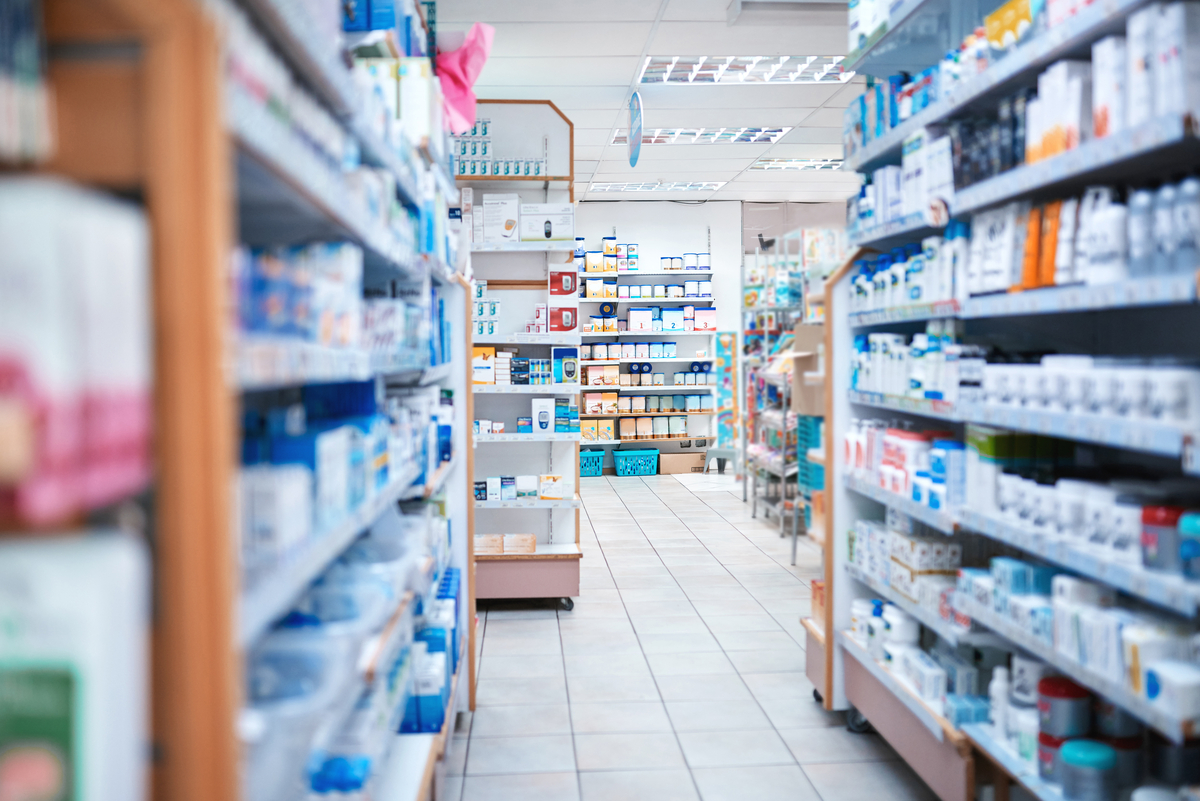How to capture consumer attention in 2025
Economist Ernie Tedeschi recently spoke with NIQ thought leaders Courtenay Verret and Lauren Fernandes about the Mid-Year Consumer Outlook report’s key findings. Here, they discuss what’s driving shifting consumer mindsets, trends to watch, and how manufacturers and retailers can meet the moment.
Deflating inflation:
As rates fall, hopes rise
There’s some good news for consumers heading into 2025.
Globally, high inflation rates are cooling to more normal levels.
Among all advanced economies, inflation is half of where it was two years ago.
For the seven largest economies (commonly referred to as the G7), inflation was at or below 3% as of June 2024.
Major central banks are beginning to lower interest rates to more normal levels.
Caveat:
Inflation is falling in part because consumers themselves have become more price sensitive than they were two or three years ago. They are likely to continue to look for solid deals and discounts; this mindset is reflected in falling consumer expectations of future inflation.
In Europe, inflation expectations have largely returned to where they were in spring 2020. Similarly, in the U.S., one-, three-, and five-year inflation expectations have fallen back to near-2019 levels. The ongoing dominance of price-sensitive consumers means businesses will likely not gain any more room on margin over the next few years—and may in fact face even tighter pricing environments.
But falling interest rates means that consumers may shift spending toward more interest rate-sensitive goods purchases they’ve been putting off. This will be especially true if governments and central banks succeed in avoiding a serious recession in the next few years.
The bottom line
In addition to strategically planning for more discounts and sales, retailers and manufacturers should continue to explore direct and indirect pricing changes, portfolio optimization, and innovation—and perhaps even develop other creative contingencies for additional price reductions if competitive pressures require.
Lowering interest rates will primarily benefit big-ticket durable goods purchases that require debt, especially housing, automobiles, and major household appliances. Economies that remain robust could also see boosts in spending on leisure and recreational goods like boats and RVs, as well as household goods and electronics. These purchases will be further supported by the lower debt service payments resulting from lower interest rates.
Manufacturers and retailers should seize on marketing opportunities to entice consumers who may have put off big-ticket purchases while interest rates were at their peak.
Falling rates, shorter waits?
Gauging post-pandemic replacement cycles
In 2020, durable goods spending surged on items like electronics, home appliances, and furniture.
This rise had several root causes:
Household income was supported by unprecedented fiscal relief in many countries.
Central banks aggressively lowered interest rates, creating a more favorable interest rate for durable goods purchases.
Consumer investments in home office equipment spiked due to work- and learn-from-home mandates.

Four years later, consumers who front-loaded durable goods spending may finally be nearing replacement cycles for at least some of those purchases—especially smaller electronics.
- Electronics already tend to have shorter replacement cycles than other durable goods—three to five years, on average—because of technological advancements.
- These cycles may be shortened even further if electronics integrate high-demand new features that require upgraded hardware, such as augmented on-device AI capabilities, smaller and lighter builds, and extended battery lives.
The outlook is less clear, however, for home appliances, which tend to run on 10- to 20-year cycles, and larger electronics like televisions, which are typically replaced every five to 10 years.
- Data from the U.S. Bureau of Economic Analysis shows that as of the end of 2022, the average current-cost age of home appliances was the same—4.8 years—as it was in 2018. This finding suggests there will be no upward or downward pressure on appliance spending from replacement cycles in the near future.
- Meanwhile, for audio–video electronics like televisions, the average age fell to 0.5 from 2.3 years—typically a sign that replacement will be less a factor in consumer spending in the near future.

The bottom line
Research from S&P Global suggests that replacement cycles for electronics such as laptops, smartphones, and wearables have lengthened since 2020, likely in response to inflation and higher interest rates. However, with both these factors now abating, we should expect those replacement cycles to contract. Emphasizing new, high-demand tech improvements and features, such as longer battery life and AI capabilities, is one way to persuade consumers’ FOMO sensibilities. But clearly communicating their value proposition—how these features will enhance day-to-day life—is equally important.
On the other hand, manufacturers of major domestic appliances and large electronics might find themselves waiting slightly longer for consumers to begin changing out those pandemic purchases. In the meantime, they should continue to focus on attracting first-time buyers, while stealing market share in more saturated product categories. Durability, repairability, and energy efficiency remain important value drivers and key marketing levers, balancing consumers’ commitment to sustainability with their desire for long-term savings.
Silver spending:
An aging population is poised to power consumer markets
With its growth potential expected to be $12 trillion by 2030, the spending impact of Generation Z has rightfully received increasing attention from retailers and brands in recent months. But they would be remiss to ignore another emerging source of spending power at the opposite end of the consumer spectrum.
In most countries, the population is aging, on average, and as a result, population growth is projected to slow or even decline. These trends are not new. They also reflect a mix of factors, including some positive ones, like longer life expectancies, greater freedoms, and more prosperity. But they will have profound effects on consumer spending for decades to come.
One way to think about aging is the increasing share of older adults among the world’s population.
People 60 years and older made up 5.5% of the world’s population in 1974, according to the United Nations Population Fund (UNPF).
That share has almost doubled in the 50 years since, reaching 10.3% in 2024.
Over the next 50 years, the UNPF projects it will double yet again, to 20.7%.
By 2047, there will be more people older than 60 than younger than 15 worldwide.
An aging population means that the face of the average consumer will, quite literally, look different over time. Older consumers in the future will have more purchasing power and command a larger share of income, wealth, and spending.
In the U.S., households 55 and over went from accounting for 56% of wealth in 2000 to 73% in 2023. Over that same period, these households went from making up 25% of income to 37%.*
*Author’s calculations using the Current Population Survey Annual Social and Economic Supplement
These growing wealth and income shares are also partially a consequence of the rise in female labor force participation that began decades ago in many advanced countries; as those women now retire, they are eligible for larger pensions and benefits as a result. And it’s not just that elderly households represent a larger share of the economic pie: Their real incomes have been growing on average, too, from prior older cohorts. This generation of elderly are more educated, on average, than prior generations of older workers—and their higher incomes (and the fact that they tend to work longer in life before retirement) reflect that.
The bottom line
The aging population means the average consumer will spend differently over time. Older consumers tend to have different spending patterns than younger demographics. They are more likely to prioritize healthcare, wellness, and leisure activities. And, since women will control more of their own retirement income than in the past, they will drive more of the change in elderly consumer spending.
However, the stereotype of elderly households on tight, stingy budgets is a gross oversimplification: A recent study by McKinsey emphasized that many aging consumers are splurging on premium products and services, perhaps reflecting the growing prosperity mentioned above.
Brands will find expansion and premiumization opportunities for this target market in categories such as health and wellness, travel, and luxury goods.
Private label perceptions:
Winning hearts and carts
The consumer shift toward private (store brand) label CPGs has garnered renewed attention over the last four years. But it is not a new phenomenon. Private labels had already made great strides in picking up sales value share over the decade prior to the pandemic. In fact, this upward trend in private label spending was briefly interrupted in 2020 as consumers temporarily flocked back to name brands in the depths of lockdowns. However, as inflation rose throughout the developed world, consumers came back to private labels. This was one of several money-saving strategies they used at checkout.
One might expect that as global inflation moderates, consumer loyalty to private labels will weaken.
After all, one of the key motivators for private label purchases—price—will be less top of mind to consumers than it was before. But so far, the opposite has been true:
53% of retailers expect private labels to be their primary growth driver in 2024.
Nearly three in four consumers said they will continue to buy private label brands as the economy improves and inflation settles.
40% of respondents to NIQ’s Mid-Year Consumer Outlook survey said they would switch to buy a private label product they enjoy, even if it costs more.
Consumer perceptions of private-label CPGs have shifted—and the shift has not been a recent one. A 2011 study found that 80% of U.S. consumers purchase private labels regularly because they see the quality as equal to or better than name brands. Results from a recent NIQ consumer survey were consistent with this finding: 72% of high-income Americans perceived private labels as a good alternative to national brands. As the 2024 analysis put it:
The gap between private labels and name brands continues to close. Store brands have done well to build brand equity by meeting multiple consumer needs—and it’s shifting the perception of desirable branding in the eyes of all consumers, regardless of income level.
Higher perceived quality is consistent with the gradually growing sales share of private label spending over the last 15 years—from 15% in 2009 to 22% in 2024, as reported by NIQ’s Mid-Year Consumer Outlook. Over this same period, inflation-adjusted per capita incomes in advanced economies grew a cumulative 23%—and by almost 60% in developing economies. As nations and consumers grow richer they, if anything, tend to “trade up” toward higher-quality goods and services over the long term. If private-label CPGs were viewed as inferior quality products whose primary trade-off was price, we would expect their sales share to be trending down, not up.
The bottom line
While value might be relative, especially in an inflationary environment, some basic tenets remain true: When a brand can deliver on the basics of affordability, innovate often, and exceed expectations for efficacy and quality, it can scale to be a top-of-mind choice for any conscious consumer. The shifted perceptions and increasing popularity of private label products serves as an important reminder for companies of all sizes.
Rx for growth:
How GLP-1s are opening doors for innovation
It’s hard to turn on the evening news without catching at least one story about the latest health breakthroughs of GLP-1s.
This class of medication has taken the world by storm:
Their market size in 2023 totaled almost $37 billion.
Novo Nordisk’s GLP-1 drugs alone, which include Ozempic and Wegovy, saw combined sales of $18.4 billion in 2023—nearly double the prior year’s revenue.
Several industry analysts forecast sustained double-digit annual growth in GLP-1 sales over the next decade.
These robust projections are driven by a mix of the strong efficacy in managing diabetes and obesity thus far, as well as the potential for the introduction of new products, including several oral GLP-1 drugs currently in development. Note, too, that these forecasts do not even account for the live possibility that GLP-1s become widespread for uses beyond weight loss, such as treating Parkinson’s disease, Alzheimer’s, and addiction.
But the GLP-1 phenomenon will have significant downstream effect on consumer spending beyond just the direct growth of the drugs themselves.
First, analysts foresee that GLP-1s will cause reduced aggregate food consumption overall:
- KPMG estimates that GLP-1s will lead to a $48 billion annual reduction in food and beverage spending each year for the next decade in the U.S. alone.
- Citigroup projects meal and snack spending could fall by 1 to 1.75% by 2035.
Most analysts agree that these declines will be concentrated among junk food and sugary snacks. Anxieties around GLP-1s have already arisen in this industry.
Caveat:
These numbers are against a counterfactual forecast without GLP-1s, so the implication is not that food consumption will shrink overall, but rather that, because of GLP-1s, it will grow more slowly than it would otherwise.
Second, within the Food & Beverage category, there could
be substitutions toward healthier food options, thereby raising their market share.
- Goldman Sachs notes that while GLP-1s tend to cause reduced spending on other weight loss aids, they are also associated with increased spending on vitamin supplements and nutrition shakes.
- NIQ’s Mid-Year Consumer Outlook survey reported that 60% of global consumers would be likely to start or increase vitamin and supplement intake for health support.
- T. Rowe Price anticipates GLP-1s could increase demand more broadly for healthy, sustainable products.
The bottom line
The savings from reduced food consumption will likely be spent elsewhere, outside of food and beverage entirely. These effects are uncertain, but there are many possibilities. One is that, as more users lose weight from GLP-1s, apparel spending will increase as they downsize, shortening the effective lifecycle for clothing. Demand for other health, beauty, and cosmetic products may also increase. And finally, in addition to health-tracking wearables, consumers may pour these savings into recreational goods more broadly.
There are other possible ancillary effects that are even more uncertain. The reduction in poor health outcomes could raise overall productivity and labor supply, thereby expanding the size of the economy; Goldman Sachs pegged this effect at 0.4% to the level of U.S. real GDP alone in the long run—again, based mostly on weight loss effects (i.e., these projections could be even larger if GLP-1s are proven effective for wider medical uses). If repeated in other global economies, this would be a meaningful macroeconomic story.
There are also opportunities and challenges for the health insurance industry, while an additional source of uncertainty will be future global political and regulatory pressure. In the U.S., these pressures have already begun.



Conclusion
As we approach 2025, businesses continue to navigate a complex consumer landscape shaped by cooling inflation and lowering interest rates.
While some Tech & Durables manufacturers might see an uptick in big-ticket purchases thanks to these market conditions, consumers will continue to seek value and spend intentionally. Discounts, promotions, innovation, and direct and indirect price adjustments will remain essential as brands continue to compete against the shifted perceptions of private label products.
At the same time, new opportunities are emerging in Health & Wellness, Beauty, and Food & Beverage to cater to the unique needs of both an aging population and consumers taking GLP-1 medications. These target segments will be ones to watch in the coming years, particularly as on-label use for GLP-1 medications grows beyond diabetes and obesity.
While challenges remain, the overall outlook for 2025 shows promise for brands and retailers who can strategically maneuver amidst evolving consumer mindsets and market conditions.
About the author
Ernie Tedeschi
Director of Economics, The Budget Lab at Yale

Ernie Tedeschi is the Director of Economics at The Budget Lab at Yale and a Visiting Fellow at the Psaros Center for Financial Markets and Policy at Georgetown University. Until March 2024, he was the Chief Economist at the White House Council of Economic Advisers. Prior to CEA, Ernie was Managing Director and Head of Fiscal Analysis at Evercore ISI. He has also been an economist at the U.S. Department of the Treasury and a contributor to TheUpshot column of The New York Times.




